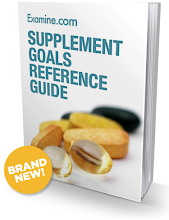Without going into a whole slew of human physiology and biochemistry, after exercise, our body needs:
- Glycogen (stored glucose) replaced that was used during exercise, and
- Protein to rebuild skeletal muscle broken down during said exercise.
Because we've depleted our muscle (and to an extent, our liver) glycogen, the body naturally wants to replace it; to get glucose into our muscle cells in the form of glycogen, we need 1) our cells to allow it to enter, and 2) a way to get it in there, because it' ain't an open-door policy. Insulin, a hormone secreted by the pancreas when carbohydrates (and protein, but we won't worry about that right now) are ingested, is like a "key" to the insulin receptors (think of these as the "door" to the cell) on our skeletal muscles. In the PWO state, these receptors are sensitized, or up-regulated. They work better, with less insulin. In fact, despite countless nutritional "experts" stating you NEED to spike your insulin, you don't. They just don't know enough about human physiology, specifically GLUT4 receptors and non-insulin mediated glucose transport. This is in place in case we were to eat a pure fat and protein meal, which would be perfectly normal in paleolithic times. But I digress.
Blah-blah-f-ing-blah, I know. Coles Notes: Sugar works better post workout. Your muscles need it. So eat it. How? PWO shake, baby!
All you need is a blender, a ripe banana, frozen fruit (I prefer a berry mix, lower GI, and higher phytonutrient content) water, and a whey protein of choice. I added a powdered greens supplement called Greens+, but this is purely optional. All it is is a whole-food greens supplement, once again, to up my daily phytonutrient, pro-biotic and anti-oxidant intake; it also affects pH and PRAL, but that's really neither here nor there.
Whey protein: I like whey isolates, just based on their purity and ease of digestion. whey protein concentrates are cheaper, protein per scoop is lower, and some folks have issues with digestion. Hydrolyzed whey is the next step up from an isolate, but IMO (in my opinion) it ain't worth the cost-to-benefit ratio. Plus it tastes like shit. Even with a ton of sweetener and other garbage.
Blender: Any will do. That classic Osterizer has lasted longer than any of my relationships, all combined. And it's not crazy, like 99.9% of the women I've dated. I like that.
Macro breakdown:
My shake is composed of about 45g carbs (30 for the banana, 15 for the berries) and 30g of protein. The Greens+ adds a negligible amount of any macro, and the rest is water.
Suggested formula: 0.4g/kg Protein, 0.8g/kg Carb. This is 30g Pro and 60g Carb for a 165lb person. Which is me. I like to go lower carb just out of pure convenience. I used to use milk, which basically added up to the 60 (or more), but milk sucks, and unless your a damn baby on the boob, the dairy council can go to hell. Not quite as pointless as grains, but close. Still has it's uses (PWO, purposeful weight gain, point in case), but it's freakin' phenomenal at making people fat otherwise.
I'll follow this up with a small balanced P/C/F whole food meal within an hour or so, and then a few hours later another whole food meal, but larger. This is the one time when multiple feedings make good sense---when your body can utilize what's being put into it.
CFLA, 1PM, Nov 27th
Low Bar Back Squat
I've been a bit of a physical wreck lately; my back, walking into the gym today, was STILL sore on the right. I also had my MRI arthrogram on Wednesday, and had a radiologist digging into my shoulder capsule with 4" long epidural needles. Needless to say, shit is sore. Despite all that, today went surprisingly well, and I was in a semi-fasted state---last whole food meal was about 6:30PM last night. Had some coffee/whey/coconut oil this AM, but that's it.
95#x10
135#x10
225#x3
275#x3 Felt really solid
295#x3 Solid, good depth, no sketchy form at all. 10# PR Ref Nov 11th for 285#x3
305#x1 Just to see; harder than hell, but *might* be a few more lbs in the tank here.
After this gift from the PR gods (not to be confused with the Crossfit gods, who are proven douche-bags and far from omnipotent), I was feeling pretty damn good. Coach Brandt had a couple of clients he was doing some personal training with, so I had to keep the celebratory profanity in check.
Death By Ten Meters
10m sprints, on the minute. 1st minute 1, 2nd minute 2, etc etc.
Worked up to 15, which please the hell out of me; felt awesome till 8, then the legs started dying. at 14, I had zero rest. At 15, I finished right at the buzzer, and threw the towel in. Might have been able to pull 16 out of the bag, but it would have been massive. There's mucho room for improvement here, as I felt I was dragging my ass in the later rounds.
I wasn't too sure how this would go; yesterday we had a massive grassfire just east-southeast of Lethbridge. Trying to dodge walls of flame kicked up by the wind, dragging hose through burnt fields and sucking back enough soot to make a chain smoker gag, I feel like I've been chewing on a piece of charcoal all night. This morning, I STILL had that taste and smell lingering, even after 2 showers and about 8 litres of water.

























